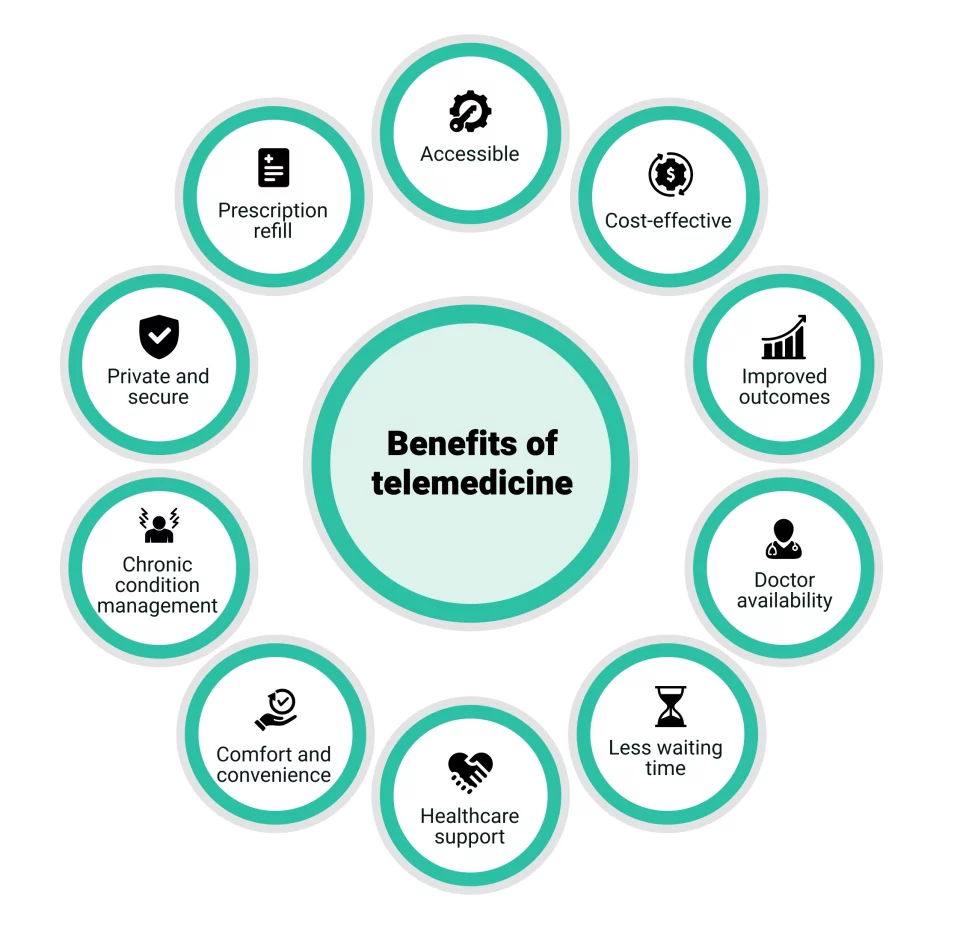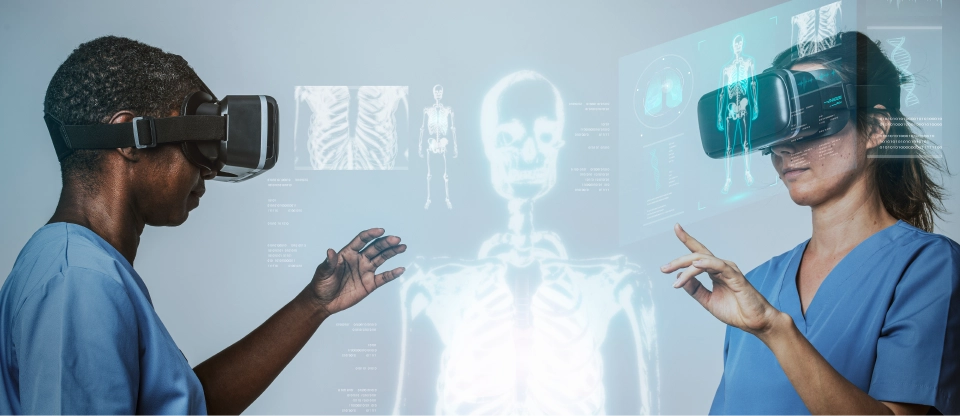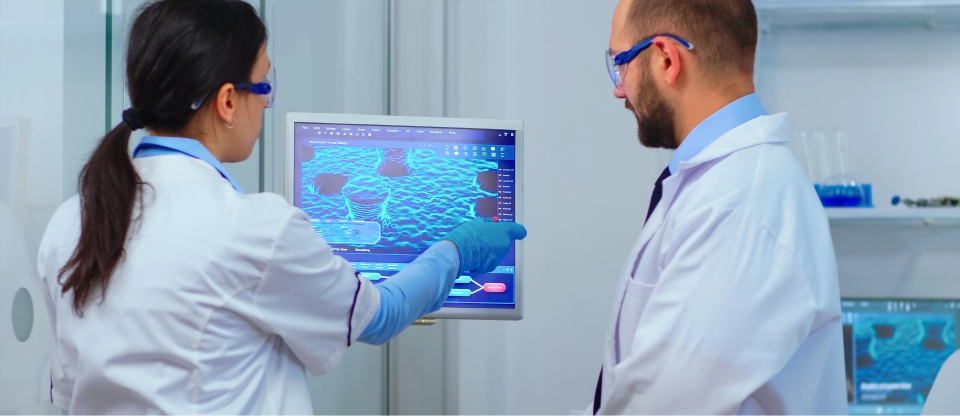INTRODUCTION
Defining the concept of telemedicine along with studying its evolution
Telemedicine, a term that once belonged to the realms of science fiction, has rapidly become a cornerstone of modern healthcare delivery. Not too long ago, the very idea of receiving medical treatment without physically visiting a hospital or clinic seemed fantastical. However, the evolution of telemedicine has transformed this notion, reshaping how individuals access and receive healthcare services.
In the past, the traditional healthcare model often required patients to visit medical facilities even for minor discomforts. However, the emergence of telemedicine revolutionized this paradigm, offering a new way to interact with healthcare providers remotely. This shift in approach has not only enhanced accessibility but has also redefined the patient experience.
At its core, telemedicine harnesses communication technologies to facilitate the remote delivery of healthcare services. Its roots trace back to early experiments and initiatives to bridge the gap between patients and healthcare professionals across geographical distances. However, the convergence of two pivotal factors propelled telemedicine into the mainstream: the global COVID-19 pandemic and rapid technological advancements.
The onset of the COVID-19 pandemic acted as a catalyst, accelerating the adoption of telemedicine out of necessity. With social distancing measures in place and healthcare systems under strain, telemedicine emerged as a vital tool for maintaining continuity of care while minimizing the risk of virus transmission. This unprecedented demand underscored the importance of telemedicine in modern healthcare delivery.
Simultaneously, ongoing technological advancements paved the way for refining and expanding telemedicine capabilities. Post-pandemic, the healthcare landscape witnessed a surge in technological innovations, further integrating telemedicine into the healthcare ecosystem. This evolution not only bolstered the efficiency and effectiveness of remote healthcare delivery but also broadened its scope and applicability.
Today, telemedicine stands as a transformative force in modern healthcare delivery, offering patients unparalleled convenience and accessibility. Its ability to provide virtual care for non-emergency cases has earned it widespread acclaim, transcending physical barriers and optimizing healthcare resources. As we navigate the evolving landscape of healthcare, telemedicine remains poised to play an increasingly integral role in shaping the future of healthcare delivery.
CURRENT LANDSCAPE
Exploring the current scenario in the world of telemedicine by looking out for its adoption trends
Telemedicine has transcended its traditional boundaries, evolving into a multifaceted healthcare delivery approach far beyond video calls. It embodies the interconnectedness of patients and providers, fostering collaboration and efficiency in care delivery. Integrating technology and modern healthcare practices is paramount in today's rapidly changing healthcare landscape.
In the wake of the COVID-19 pandemic, telemedicine experienced an unprecedented surge in adoption as companies scrambled to incorporate it into their health practices. As the pandemic spread rapidly, healthcare providers and organizations faced immense pressure to mitigate the risk of viral transmission while ensuring continued access to essential healthcare services. In response, many companies swiftly pivoted to integrate telemedicine into their existing health practices, recognizing its potential to bridge care delivery gaps and safeguard patients and healthcare professionals. This rapid implementation forced organizations to embrace a patient-centric approach, thereby unlocking a plethora of opportunities within the healthcare system. Virtual consultations, remote monitoring, and digital health platforms emerged as indispensable tools in this new paradigm, enabling patients to access timely and personalized care from the safety and comfort of their homes.
As the healthcare landscape continues to evolve after the pandemic, telemedicine remains a vital component of the modern healthcare ecosystem. The growth of telemedicine is not merely a statistic but a testament to innovation and transformation within the healthcare industry. However, the initial rush to implement telemedicine left little room for thorough evaluation. Three years later, the telemedicine craze shows no signs of slowing down.
Amidst this burgeoning landscape, telemedicine adoption rates continue to soar, driven by a growing demand for accessible and convenient healthcare services. Key players in the telemedicine arena include established healthcare providers, tech giants, startups, and telemedicine platforms. These entities are at the forefront of innovation, constantly evolving to meet the changing needs of patients and providers.
Trends within telemedicine reflect a shift towards personalized and comprehensive care delivery models. Remote monitoring, virtual consultations, and digital health platforms are becoming increasingly prevalent, offering patients a seamless healthcare experience from the comfort of their own homes. As telemedicine continues to gain normalcy, it is poised to revolutionize how healthcare is delivered and experienced, ushering in a new era of connected and accessible healthcare.
BENEFITS
Navigating the advantages of telemedicine that enable providers to offer enhanced patient care
In an era of rapid technological advancements and shifting healthcare paradigms, telemedicine has emerged as a transformative force in modern healthcare delivery. Telemedicine uses communication technologies to enable healthcare providers to remotely connect with patients, offering diagnosis, treatment, and ongoing care without needing in-person visits. The widespread adoption of telemedicine apps, designed to be user-friendly and accessible to individuals of all technological proficiencies, pushes forward a paradigm shift in healthcare delivery. As telemedicine continues gaining traction, its benefits extend far beyond convenience, reshaping the healthcare landscape and unlocking many opportunities for patients and providers.
- Easily accessible healthcare - Telemedicine breaks down geographical barriers, allowing patients to access healthcare services virtually anywhere with an internet connection. This accessibility is especially beneficial for individuals living in remote or underserved areas and those with mobility limitations.
- Cost-effective care - Telemedicine often involves lower costs compared to traditional in-person visits. Patients can save on transportation expenses, parking fees, and time away from work. Additionally, telemedicine visits may be priced more competitively than in-person consultations, making healthcare more affordable and accessible to a broader population.
- Improved patient outcomes - Telemedicine has been shown to enhance patient outcomes by providing timely access to healthcare services. Through remote monitoring and virtual consultations, healthcare providers can closely monitor patients' health status, intervene early in case of complications, and ensure continuity of care, leading to better health outcomes and reduced hospitalizations.
- Increased doctor availability - Telemedicine frees up doctors' time by eliminating the need for in-person appointments for routine consultations or follow-ups. It allows healthcare providers to allocate their time more efficiently, focusing on patients with more complex medical needs or emergencies.
- Reduced waiting times - Telemedicine reduces or eliminates the need for patients to wait in crowded waiting rooms, leading to shorter wait times for consultations. Patients can schedule appointments at their convenience, minimizing unnecessary delays and improving overall satisfaction with the healthcare experience.
- Online healthcare support - Telemedicine platforms often offer additional services for digital health patient engagement, such as access to educational resources, self-care tools, and virtual support groups. These resources empower patients to actively manage their health and well-being, promoting healthier lifestyles and preventive care.
- Comfort and convenience - Telemedicine consultations can be conducted from the comfort of the patient's home, eliminating the stress and inconvenience associated with traveling to a healthcare facility. Patients can receive care in familiar surroundings, reducing anxiety and enhancing the overall healthcare experience.
- Chronic condition management - Telemedicine is particularly beneficial for managing chronic conditions that require ongoing monitoring and management. Through remote monitoring devices and virtual check-ins, healthcare providers can closely monitor patients' health status, adjust treatment plans as needed, and provide timely interventions to prevent complications.
- Secure and private - Telemedicine platforms prioritize patient privacy and confidentiality, adhering to strict security protocols and encryption standards to protect sensitive medical information. Patients can feel confident that their personal health data is secure and only accessible to authorized individuals.
- Prescription refills - Telemedicine enables patients to request prescription refills conveniently through virtual consultations with their healthcare providers. This streamlines the prescription renewal process, ensuring patients have timely access to the medications they need to manage their health conditions effectively.

CHALLENGES
Learning the challenges that hold back telemedicine
While telemedicine holds immense promise in revolutionizing healthcare delivery, it has challenges. Despite its numerous benefits, telemedicine cannot fully replicate the authenticity and nuanced interactions of in-person visits, presenting physicians and patients with unique obstacles. As a transformative innovation in healthcare, telemedicine has garnered considerable attention and adoption in recent years. However, its journey towards widespread acceptance and integration into mainstream healthcare delivery has been hindered by various challenges.
One of the primary hurdles facing telemedicine is its perceived limitations and the reluctance of some healthcare stakeholders to embrace remote healthcare delivery fully. Despite its long-standing presence in the healthcare landscape, telemedicine has yet to realize its full potential, grappling with sluggish growth and limited acceptance. Understanding and addressing these challenges is essential to unlocking the full benefits of telemedicine and realizing its transformative impact on modern healthcare delivery.
- Regulatory hurdles - Telemedicine faces regulatory challenges stemming from varying laws and regulations across different regions and jurisdictions. These regulatory frameworks (for example, HIPAA compliance for software) may dictate licensure requirements, reimbursement policies, and standards of care, creating barriers to the widespread adoption and interoperability of telemedicine platforms and services.
- Technical difficulties - Telemedicine encounters technical issues related to connectivity, compatibility, and reliability of communication technologies. Poor internet connectivity, hardware limitations, and software glitches can disrupt telemedicine consultations, compromising the quality and continuity of care delivery.
- Diagnostic accuracy - Ensuring diagnostic accuracy in telemedicine consultations poses a significant challenge, particularly for conditions that require physical examination or diagnostic testing. Limited access to diagnostic tools and medical equipment and the inability to conduct hands-on assessments may hinder healthcare providers' ability to accurately diagnose and treat patients remotely.
- Awareness and acceptance - Despite its potential benefits, telemedicine faces challenges related to awareness and acceptance among both healthcare providers and patients. Misconceptions, skepticism, and lack of familiarity with telemedicine may deter healthcare stakeholders from embracing remote healthcare delivery, impeding its widespread adoption and utilization.
- Privacy and security concerns - Telemedicine raises privacy and security concerns related to the confidentiality and protection of patients' sensitive health information. Data breaches, unauthorized access, and inadequate security measures can compromise patient privacy and undermine trust in telemedicine platforms and services, posing significant ethical and legal implications.
RECENT INNOVATIONS
Discovering the latest innovations and prospects of telemedicine
Technological advancements and telemedicine share a symbiotic relationship, each driving and shaping the evolution of the other in modern healthcare delivery. Telemedicine, which encompasses the remote delivery of healthcare services through communication technologies, relies heavily on technological innovations to expand its capabilities and effectiveness. The continuous advancement of communication technologies such as high-speed internet, mobile devices, and telecommunication infrastructure has been instrumental in enabling the growth of telemedicine.
Moreover, mobile app development for healthcare providers and patients in telemedicine has further enhanced the accessibility and functionality of remote healthcare services. These platforms often integrate features such as video conferencing, secure messaging, electronic health records (EHR) integration, and remote monitoring capabilities, enabling comprehensive and personalized care delivery from virtually anywhere.
Conversely, telemedicine has also spurred technological innovations by creating demand for solutions that address specific healthcare challenges. For example, the need for accurate diagnostic tools in remote consultations has driven the development of telemedicine-enabled medical devices and diagnostic technologies. Similarly, remote monitoring devices, wearable sensors, and mobile health applications have emerged to support telemedicine-based chronic disease management and remote patient monitoring.
As technological advancements continue to accelerate, the scope and capabilities of telemedicine are expected to expand further. Emerging technologies such as artificial intelligence (AI), machine learning, virtual reality (VR), and augmented reality (AR) hold immense potential to transform telemedicine by enhancing diagnostic accuracy, personalizing treatment plans, and improving patient engagement and outcomes.
- AI-powered telemedicine solutions - Recent artificial intelligence (AI) advancements have revolutionized telemedicine by enabling more personalized and efficient healthcare delivery. The future of AI in healthcare is bright with AI-driven telemedicine solutions leveraging machine learning algorithms to analyze vast amounts of patient data, optimize treatment plans, and provide real-time clinical decision support to healthcare providers. These AI-powered systems can assist in triaging patients, diagnosing medical conditions, and predicting health outcomes, ultimately improving the quality and efficiency of remote healthcare services.
- Remote patient monitoring devices - Integrating remote patient monitoring (RPM) devices into telemedicine platforms has transformed how healthcare providers monitor and manage patients' health remotely. RPM devices, such as wearable sensors, smart devices, and mobile health applications, enable continuous monitoring of vital signs, medication adherence, and disease progression from the comfort of patients' homes. This real-time data allows healthcare providers to remotely track patients' health status, identify potential issues early, and intervene proactively, improving patient outcomes and reducing hospitalizations.
- Virtual Reality (VR) applications in healthcare - VR technology is increasingly used in telemedicine to enhance patient engagement, education, and rehabilitation. VR applications enable immersive and interactive experiences that simulate real-life environments, allowing patients to undergo virtual consultations, participate in therapy sessions, and engage in therapeutic activities from remote locations. VR-based telemedicine solutions have shown promise in treating mental health disorders, chronic pain, and physical disabilities, offering patients a novel and effective approach to remote healthcare delivery.
- Integration with wearable devices and IoT - Telemedicine platforms increasingly integrate with wearable devices and the Internet of Things (IoT) to gather real-time health data and enhance remote patient monitoring capabilities. Wearable devices, such as smartwatches, fitness trackers, and medical sensors, collect valuable health metrics, including heart rate, blood pressure, and activity levels, which are seamlessly transmitted to telemedicine platforms for analysis and interpretation. This integration enables healthcare providers to monitor patients' health status remotely, identify trends or abnormalities, and adjust treatment plans accordingly, leading to more proactive and personalized care delivery.
ASAHI'S ROLE
Understanding the expertise of Asahi Technologies in telemedicine development
We have carved out a niche in telemedicine development, leveraging our spotless expertise in healthcare software development to spearhead innovative solutions that hit the mark every time. With an unerring focus on refining user experiences and meeting regulatory standards, we have honed our ability to idealize telemedicine platforms seamlessly integrating with changing exposures in the healthcare landscape. At the very steps of the funnel, we work tirelessly to understand the unique needs of healthcare providers and patients, ensuring that our custom telemedicine software solutions are downright slick and tailored to their requirements.
Moreover, Asahi Technologies doesn't pigeonhole itself when it comes to innovation. By staying on the cutting edge of emerging technologies such as AI, IoT, and predictive analytics, we continue to push the envelope in telemedicine development, hitting the bulls-eye with solutions that anticipate and address the evolving needs of the healthcare industry.
CONCLUSION
A summary of the key points and final thoughts on the future of telemedicine
As we look ahead to the future of telemedicine, one thing is abundantly clear: its potential for transformative impact on healthcare delivery knows no bounds. With technological advancements continuing to accelerate and the global healthcare landscape evolving at an unprecedented pace, telemedicine stands poised to play an increasingly central role in shaping the future of healthcare.
As telemedicine technologies continue to mature and evolve, we can expect to see even greater integration of key medical software with emerging technologies such as AI, IoT, and virtual reality, further enhancing its capabilities and expanding its reach. The possibilities for telemedicine are limitless, from remote patient monitoring and virtual consultations to AI-driven diagnostics and personalized treatment recommendations.
The future of telemedicine is bright and full of promise. With its ability to transcend geographical boundaries, increase access to care, and empower patients and providers alike, telemedicine represents a beacon of hope for the future of healthcare. As we continue to harness the power of technology to drive positive change, the possibilities for telemedicine are truly limitless, and the journey toward a healthier, more connected world has only just begun.
Most Common Questions People Also Ask (PAA):
- What is telemedicine and how does it work?
Telemedicine is a method of providing healthcare remotely through technology. It typically involves video calls or secure messaging between patients and healthcare providers. - What are the benefits of telemedicine for patients?
Telemedicine offers numerous benefits for patients, including increased accessibility to healthcare, reduced travel time and costs, convenience of remote consultations, and improved management of chronic conditions. - How secure is telemedicine for sharing medical information?
Telemedicine prioritizes patient privacy and security through encryption, secure platforms, and adherence to HIPAA regulations, ensuring that medical information is safely shared between patients and providers. - What are the challenges faced by healthcare providers in adopting telemedicine?
Healthcare providers face challenges in adopting telemedicine, including technological barriers, regulatory compliance, reimbursement concerns, and ensuring effective communication and care coordination with patients. - How does telemedicine comply with regulatory requirements?
Telemedicine must comply with regulatory requirements such as HIPAA in the United States, ensuring patient confidentiality, data security, and ethical use of telemedicine technologies. - What role does telemedicine play in improving access to healthcare in rural areas?
Telemedicine plays a crucial role in improving rural healthcare access by overcoming geographical barriers, connecting patients with specialists, and providing timely medical consultations without the need for travel. - Can telemedicine effectively diagnose and treat medical conditions?
Telemedicine can effectively diagnose and treat many medical conditions, including minor illnesses, chronic diseases, mental health disorders, and follow-up care for existing conditions through remote consultations and diagnostic tools. - How does telemedicine integrate with existing healthcare systems?
Telemedicine integrates with existing healthcare systems through interoperable platforms, electronic health record (EHR) integration, and collaborative care models, facilitating seamless provider communication and data sharing. - What are the costs associated with implementing telemedicine solutions?
Costs associated with implementing telemedicine solutions vary depending on technology infrastructure, software development, training, and ongoing maintenance, but can result in long-term savings by reducing healthcare utilization and improving patient outcomes. - What are the future advancements expected in telemedicine technology?
Future advancements in telemedicine technology may include advancements in AI-driven diagnostics, virtual reality applications, remote monitoring devices, predictive analytics, and telehealth platforms, further enhancing the quality, accessibility, and efficiency of remote healthcare delivery.






